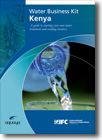Trop Med Int; Health, Dec 28, 2012, DOI: 10.1111/tmi.12051
Hygiene intervention reduces contamination of weaning food in Bangladesh
Mohammad Sirajul Islam1,*, Zahid Hayat Mahmud1, Partha Sarathi Gope1, Rokon Uz Zaman1, Zakir Hossain1, Mohammad Shafiqul Islam1, Dinesh Mondal1, Mohammad Abu Yushuf Sharker1, Khairul Islam2, Hasin Jahan2, Abbas Bhuiya1, Hubert P. Endtz3, Alejandro Cravioto1, Valerie Curtis4, Ousmane Touré5, Sandy Cairncross
Objective – This study was conducted to measure the impact of a hygiene intervention on the contamination of weaning food in Bangladesh.
Methods – Sixty households were selected: 30 study and 30 control households. Samples of weaning food were collected from all the 60 households at baseline and examined for faecal coliforms (FC), faecal streptococci (FS) and Clostridium perfringens (CP) following standard procedures. After cooking, food samples were collected on three occasions before feeding. Following Hazard Analysis Critical Control Point (HACCP) procedures, critical control points were determined. The mothers in the 30 study households were then trained for 4 weeks in how to attain the control point conditions. Then, again the food samples were collected and analysed.
Results – At baseline, weaning foods from study and control households were heavily contaminated with FC and FS. The FC and FS counts were 1.84 log10 and 1.92 log10 colony-forming unit (cfu)/g, respectively, in the study households, and 0.86 log10 and 1.33 log10 cfu/g, respectively, in the control households in the first feeding. After the intervention, the FC and FS counts in study households had dropped to 0.10 log10 and 0.09 log10 cfu/g, respectively, a statistically significant reduction (P < 0.001). Monitoring the sustainability of the behaviour change after 3 months showed that the mothers were maintaining food hygiene.
Conclusions – A hygiene intervention following the HACCP approach reduced the weaning food contamination significantly. Awareness building among mothers about weaning food hygiene could be an important intervention for preventing weaning food–related diarrhoea in Bangladesh.




